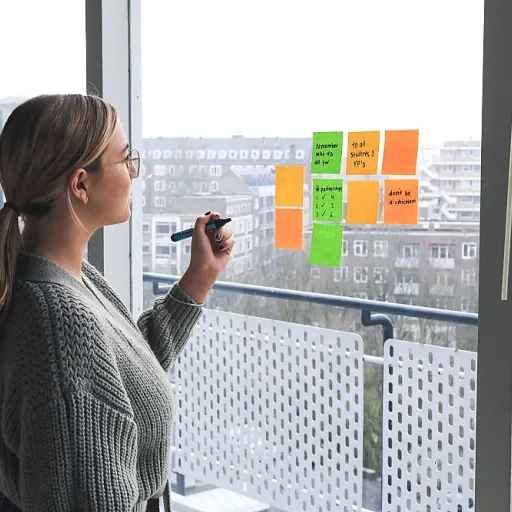
Understanding the procurement landscape in New Zealand
Procurement in the New Zealand Business Environment
Procurement plays a vital role in every New Zealand company, shaping how organisations source goods and services, manage supplier relationships, and control costs. The procurement process is more than just making purchases; it’s about ensuring compliance, managing risk, and supporting business objectives. For office managers, understanding the local procurement landscape is the first step toward effective procurement assessment and improvement.
Unique Features of New Zealand’s Procurement Landscape
New Zealand’s procurement environment is shaped by a mix of government regulations, local market dynamics, and global supply chain influences. Organisations must navigate procurement policies that emphasise transparency, fair competition, and value for money. This means every purchase, contract, and supplier engagement should align with both internal procurement policies and external compliance requirements.
- Regulatory compliance: Adhering to national procurement standards and guidelines is essential to avoid risks and ensure ethical sourcing.
- Supplier diversity: Many businesses aim to include local and diverse suppliers, supporting community development and reducing supply chain risks.
- Risk management: Identifying and managing risks in procurement activities, such as supply disruptions or contract non-compliance, is a key responsibility.
Why Assessment Matters
Regular procurement assessment helps organisations identify gaps, optimise processes, and achieve cost savings. By reviewing procurement activities and contracts, office managers can ensure that their procurement process is both efficient and compliant. This assessment process also supports strategic sourcing and risk assessment, helping to guide procurement decisions that benefit the entire organisation.
With the increasing focus on digital transformation, many New Zealand companies are also exploring ways to streamline procurement processes and reduce paperwork. Embracing a paperless approach to accounts payable is one example of how technology can support effective procurement and risk management.
Understanding these fundamentals sets the stage for evaluating procurement efficiency, identifying common challenges, and implementing best practices for long-term success in your organisation.
Key indicators of procurement efficiency
What Makes Procurement Efficient?
For New Zealand office managers, understanding what drives effective procurement is essential. Efficiency in procurement processes means more than just getting the best price. It’s about ensuring the right goods and services are sourced at the right time, with minimal risk and maximum value for the organization. A procurement assessment helps identify where your current process stands and what improvements can be made.
- Cost savings: Review purchase data and contracts to identify opportunities for reducing spend without sacrificing quality. Strategic sourcing and regular supplier assessment are key here.
- Process speed and accuracy: Measure how quickly and accurately your procurement activities move from purchase request to payment. Delays or errors can signal inefficiencies or risks in your supply chain.
- Compliance and risk management: Effective procurement policies ensure compliance with local regulations and internal guidelines. A risk assessment of your procurement process can highlight gaps that may expose your business to unnecessary risks procurement-related.
- Supplier relationships: Strong supplier relationships support better terms, reliable delivery, and access to new product service offerings. Regularly review supplier performance as part of your procurement assessment process.
- Data-driven decision making: Use sample data from past purchases and contracts to guide procurement improvements. Data analysis helps identify trends, risks, and best practices for your organization.
To guide procurement towards best practices, it’s important to set clear indicators and benchmarks. These will help you identify strengths and weaknesses in your procurement processes and support continuous improvement. For more on how financial oversight can impact procurement efficiency, check out this resource on optimizing financial oversight with a control account manager in New Zealand companies.
Common challenges faced by New Zealand office managers
Recognising Procurement Pain Points in New Zealand Offices
Office managers across New Zealand face a unique set of challenges when it comes to managing procurement activities. The procurement process, while essential for business continuity, often encounters roadblocks that can impact cost savings, compliance, and supplier relationships. Understanding these common hurdles is the first step to a more effective procurement assessment and risk management strategy.
- Fragmented Procurement Processes: Many organisations still rely on manual or outdated systems for purchases and contract management. This can lead to inconsistent procurement policies, duplicate purchases, and difficulty tracking spend data.
- Lack of Visibility and Data: Without centralised procurement data, it becomes challenging to review supplier performance, identify cost-saving opportunities, or ensure compliance with procurement policy. Sample data from recent procurement assessments often highlight missed opportunities for strategic sourcing and risk assessment.
- Supplier and Contract Risks: Managing a diverse supplier base and multiple contracts increases the risk of non-compliance, supply chain disruptions, and missed renewals. Effective procurement requires regular contract review and proactive risk management to ensure continuity of goods and services.
- Resource Constraints: Office managers often juggle procurement activities alongside other responsibilities, limiting the time available for thorough process assessment and supplier relationship building.
- Compliance and Regulatory Pressures: New Zealand businesses must adhere to strict procurement policies and regulations. Failing to guide procurement activities within these frameworks can expose the organisation to legal and financial risks.
To address these challenges, organisations are increasingly turning to technology solutions that automate and streamline procurement processes. Integrating platforms for accounts payable and procurement, such as those discussed in enhancing efficiency with Paycom and NetSuite integration, can help office managers gain better control over purchases, contracts, and supplier data. This not only reduces risks procurement but also supports cost-effective, compliant, and strategic sourcing decisions.
Practical steps for conducting a procurement process assessment
Steps to Review and Improve Your Procurement Activities
Conducting a procurement assessment in your New Zealand organization is essential for identifying inefficiencies, risks, and opportunities for cost savings. Here’s a practical approach to guide procurement reviews and ensure your process is robust and compliant with best practices.
- Map Your Procurement Process
Start by documenting every step, from sourcing to purchase and contract management. This helps visualize the flow of goods and services and highlights areas where delays or errors may occur. - Gather and Analyse Sample Data
Collect recent purchase orders, contracts, and supplier records. Reviewing this data can reveal trends, such as frequent purchases from a single supplier or recurring compliance issues. - Assess Supplier Performance
Evaluate your suppliers based on delivery times, product service quality, and adherence to contracts. This risk assessment helps identify suppliers who may pose risks to your supply chain or business continuity. - Review Procurement Policies
Check if your procurement policies align with current regulations and industry standards. Ensure all staff understand and follow these policies to reduce compliance risks. - Identify and Mitigate Risks
Look for risks procurement may face, such as single-source dependencies or lack of contract clarity. Develop risk management strategies to address these issues, like diversifying suppliers or updating contract terms. - Engage Stakeholders
Involve key staff from different departments in the assessment process. Their insights can help identify hidden challenges and improve procurement activities across the organization. - Benchmark Against Best Practices
Compare your procurement processes with industry benchmarks. This can highlight gaps and inspire improvements for more effective procurement and cost savings.
| Assessment Step | Purpose | Key Outcome |
|---|---|---|
| Process Mapping | Visualize procurement flow | Identify bottlenecks |
| Data Review | Analyse sample data | Spot trends and issues |
| Supplier Assessment | Evaluate supplier relationships | Improve supply chain resilience |
| Policy Review | Ensure compliance | Reduce risks |
| Risk Management | Identify procurement risks | Develop mitigation plans |
By following these steps, your procurement assessment will help you identify areas for improvement, ensure compliance, and build a more resilient procurement process. This approach supports better decision-making and long-term value for your organization.
Leveraging technology for better procurement outcomes
Using digital tools to streamline procurement activities
Modern procurement processes in New Zealand companies are increasingly shaped by technology. Digital tools can help your organization automate repetitive tasks, manage contracts, and track purchases more efficiently. By integrating procurement software, you can centralize data, making it easier to review procurement activities and identify cost savings opportunities. This also supports better compliance with procurement policies and reduces manual errors in the assessment process.
Improving data-driven decision making
Access to real-time data is crucial for effective procurement assessment. With the right technology, you can monitor supplier performance, analyze purchase trends, and conduct risk assessments with greater accuracy. Sample data from previous purchases can help you identify risks procurement teams might overlook, such as supplier delays or non-compliance with contracts. This approach ensures your procurement policy is based on facts, not assumptions, and supports strategic sourcing decisions.
Enhancing risk management and compliance
Technology can play a significant role in risk management. Automated alerts for contract renewals, supplier certifications, and compliance deadlines help reduce risks in the supply chain. Digital platforms also make it easier to document procurement activities, which is essential for audits and ongoing procurement assessment. This transparency helps guide procurement best practices and strengthens your organization’s ability to respond to changes in the business environment.
Supporting supplier relationships and long-term value
Effective procurement is not just about cost; it’s about building strong supplier relationships. Technology enables better communication and collaboration with suppliers, making it easier to source goods services and manage contracts. By leveraging digital tools, you can track supplier performance, share feedback, and work together to achieve long-term success. This proactive approach supports both risk assessment and ongoing improvement of procurement processes.
- Automate routine procurement tasks to free up time for strategic work
- Centralize procurement data for easier review and compliance
- Use analytics to identify cost savings and manage risks
- Enhance supplier relationships through digital collaboration tools
Adopting technology in your procurement process is a practical step towards more effective procurement and better business outcomes. It helps ensure your organization can adapt to changes, manage risks, and achieve greater value from every purchase.
Building stronger supplier relationships for long-term success
Strengthening Supplier Collaboration for Sustainable Value
Building robust supplier relationships is a cornerstone of effective procurement in New Zealand companies. Strong partnerships with suppliers not only help secure reliable sources for goods and services, but also support risk management, cost savings, and compliance with procurement policies.- Open Communication: Regular, transparent communication with suppliers helps identify potential risks early and ensures both parties are aligned on expectations, contract terms, and service levels.
- Performance Review: Conducting periodic supplier assessments using sample data and key performance indicators allows your organization to review supplier performance, identify areas for improvement, and address any compliance issues.
- Joint Risk Assessment: Collaborate with suppliers to assess risks in the supply chain. This joint approach to risk assessment can reveal vulnerabilities in procurement processes and guide procurement activities towards more resilient outcomes.
- Strategic Sourcing: Engage in strategic sourcing to diversify your supplier base. This reduces dependency on a single source and mitigates risks procurement teams often face, such as supply disruptions or price volatility.
- Contract Management: Maintain clear, up-to-date contracts that outline service levels, compliance requirements, and dispute resolution processes. Well-managed contracts help ensure the procurement process remains efficient and compliant.
Best Practices for Long-Term Supplier Success
- Foster a culture of mutual respect and shared goals with your suppliers.
- Involve suppliers early in the procurement assessment process to leverage their expertise and data insights.
- Use procurement technology to track purchases, monitor contract compliance, and automate routine procurement activities.
- Regularly review procurement policies to ensure they support both business objectives and supplier relationship management.












